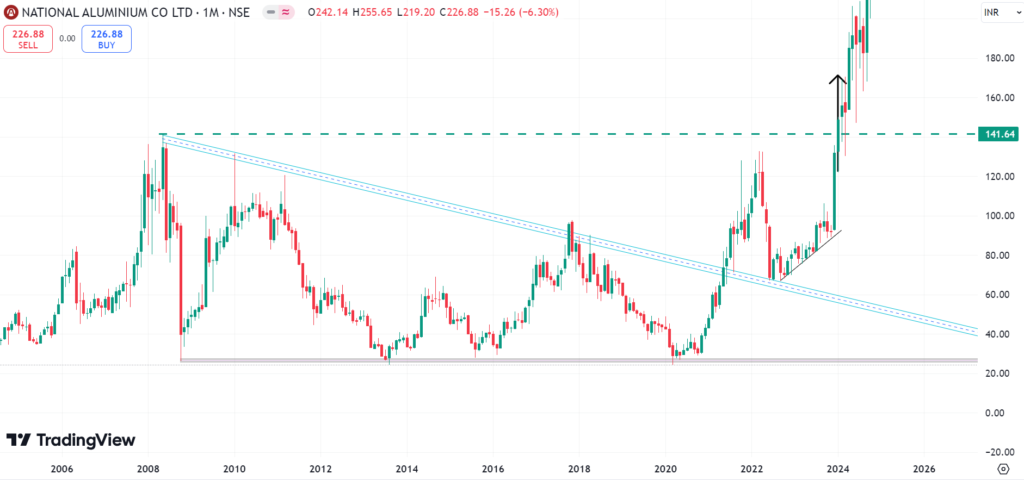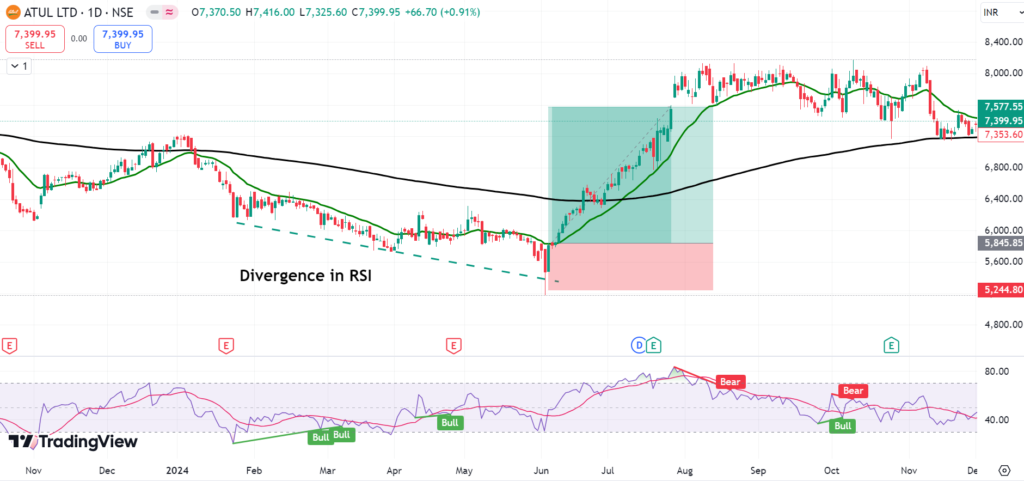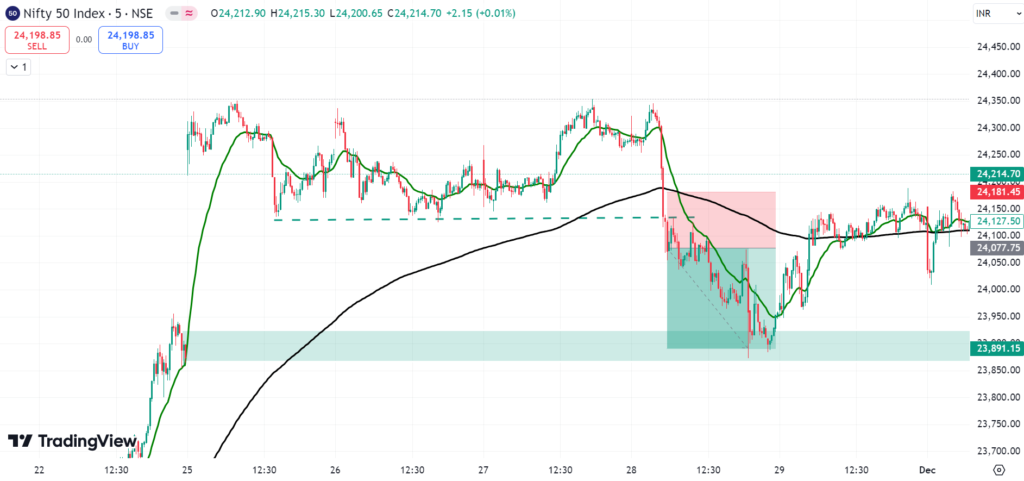Swing trading and Intraday trading are the most common trading style all over the globe in securities market. While these strategies aim to capitalize on market movement hoping to make profit from movement on a market’s price at the end of the expiry, they are more suited to two different types of trader with different goals and risk profiles. In this Blog, we will talk about swing trading strategies, intraday trading techniques, their differences, and some actionable tips to profitably trade both
What is Swing Trading?
Swing trading refers to the trading of a stock, currency or commodity and holding it for a few days up to a few weeks. With medium time frames we are trying to catch price swings and make profit. This strategy is suitable for traders who potentially cannot observe the market 24/5 but who desire to trade.

Swing Trading Strategies in the Indian Stock Market
- Trend Following: Find stocks with a solid uptrend or downtrend and hitch ride till you hit the sign of the reversal. Confirm with indicators like moving averages and (Relative Strength Index) RSI.
- Buy near support levels: sell near resistance levels It works well for stocks that are in a range.
Swing Trading Using RSI
RSI works especially well in swing trading as it allows traders to:
- Spot Overbought & Oversold Conditions: These levels tell you when a stock is likely to take a breather (overbought) or bounce back (oversold).
- Finding Divergences: Overbought divergence forms when the price hits a new high with the RSI exception. That can indicate a reversal is coming.
- Confirming Trend Strength: The RSI can be used to confirm trend strength, helping traders align their trades with the prevailing market trend.
Swing trading is another common trading style designed to exploit short-to-medium-term price moves against the trend. One of the more reliable and versatile indicators you may find in the toolbox of swing traders is the Relative Strength Index or RSI. In this blog we will discuss the effective use of RSI in Swing trading, including strategies, tips and examples that will help you improve your trading

What is Intraday Trading?
Intraday trading or Day trading refers to the purchase and sale of securities on the same trading day. The goal of day trading is to profit off the the small price movement in a single day.

Effective Intraday Trading Strategies in India
- Scalping: Enter and exit trades quickly to profit from small price movements. This is a matter of precision and a fast trading platform.
- Our momentum trading strategy: Look for stocks that have volatility or news triggers and trade with the trend.
- Reversals strategy: Monitor for overbought or oversold stocks and trade on those using indicators like Bollinger Bands or stochastic oscillators.
Swing Trading vs. Intraday Trading: Key Differences
- Time Frame: Swing trading stays in trade for days or weeks whereas intraday tends to close all trades at the end of trading session.
- Risk appetite: Due to market gaps, swing traders expose themselves to overnight risks, while the market conditions for intraday traders strips away overnight risks but imposes higher intraday volatility
- Intraday requires more margin capital based on leverage, but swing can be carried with a lower capital.
- Skills: Intraday trading requires a high level of vigilance, quick decision-making, and expertise in technical analysis. Swing trading is based on larger trends and it takes greater patience.
Best Swing Trading Stocks and Intraday Picks
- Popularity of Swing Trading Stocks for Steady Returns.
- Blue chips with solid fundamentals such as Reliance Industries, TCS and Infosys.
- Stocks of hot sectors like renewable energy or technology.
- Top Indian Stocks to Trade in Intraday.
- HDFC Bank, ICICI Bank, Tata Motors – High-volume stocks.
- Intraday candidates that are volatile mid-cap stocks.
Top Indicators for Swing and Intraday Trading
- Moving Average: Identify trends; support and resistance levels.
- Relative Strength Index (RSI): Identify overbought or oversold conditions. For more details about RSI you can visit https://nifty50trends.com/what-is-relative-strength-index/
- Bollinger Bands : It helps in identifying volatility & reversals.
- MACD (Moving Average Convergence Divergence): It is used for Buy and sell signals https://nifty50trends.com/moving-average-convergence-divergence-macd/
How to Start Swing Trading for Beginners
- Study Technical Analysis: Get to know the chart patterns, trend lines and indicators.
- Select Stocks wisely: Look for trending stocks with consistent price patterns.
- We always use stop-loss orders to control your losses.
- Keep Updated: Follow up with global and local market news to assess market directions.
Intraday Trading Tips for Beginners
- Keep a Tracker for 2-3 Stocks: Track only 2-3 liquid stocks for focus
- Trade with Discipline: Follow your trading plan and resist the temptation of emotional trading decisions.
- Risk Only: Trade only 1-2% of your capital per trade
- Avoid Overtrading: The essence of quality over quantity.
Swing Trading vs. Day Trading: Key Takeaways
- Swing trading allows for greater flexibility, making it more suitable for part-time traders.
- Thus, intraday deals offer the benefit of speed but require additional expertise and consistent focus.
- Diversifying risk and maximizing return with a combination of both strategies.
Common Mistakes to Avoid
Swing Trading Mistakes.
- The excessive retention of losing trades.
- Denial of market news and events.
- Over-leveraging positions.
- Mistakes to Avoid in Intraday Trading
- Making emotional trades.
- Not considering stop-loss or risk management.
- It then gets adjusted with the volume after that day – low volume explains this.
Best Time Frames for Swing and Intraday Trading
- Swing trading: Monitor daily and weekly charts for a wider view of market trends.
- For Intraday Trading you can use the 5 minute and the 15 min chart for clear entry and exit points.
Conclusion: Mastering Both Worlds
From swing trading strategies to intraday trading techniques, success hinges on disciplined execution, incessant learning, and effective risk management. Take through small positions, test where your strategies, and recurse when you feel suitable. Knowing the various aspects to discriminate between swing and intraday trading can help you go for the one that meets your needs based on preference and plan. The stock market is one of only very few places where patience, preparation, and persistence are collectively rewarded, so make sure you are sharpening your skills to stay one step ahead.
